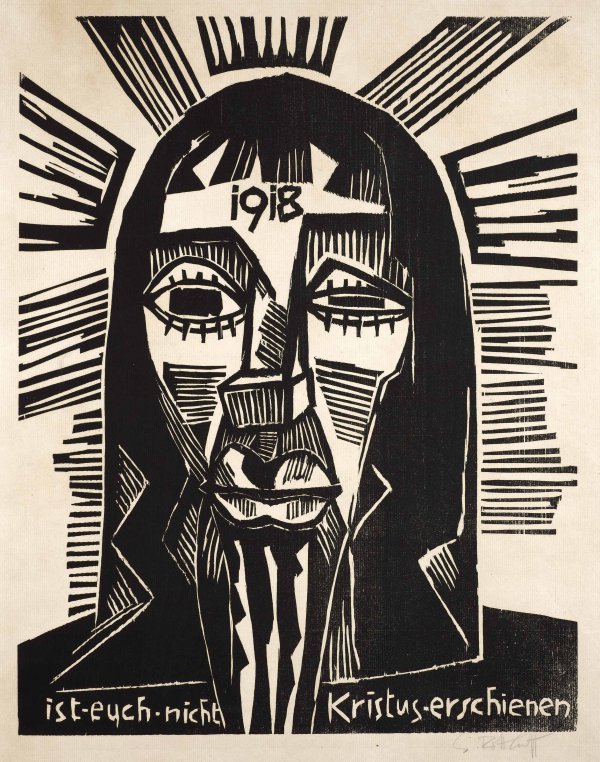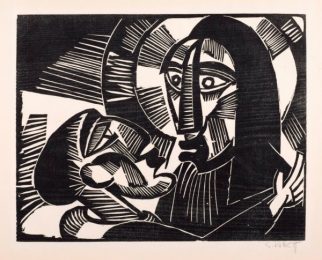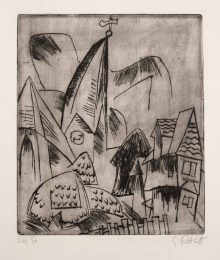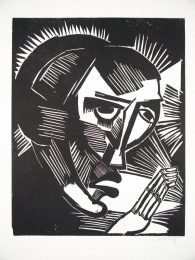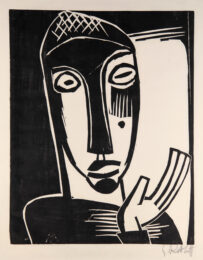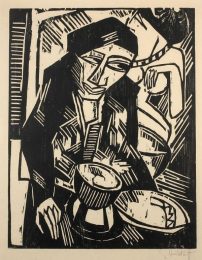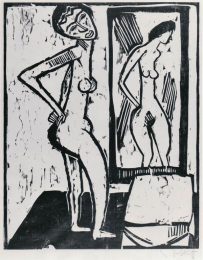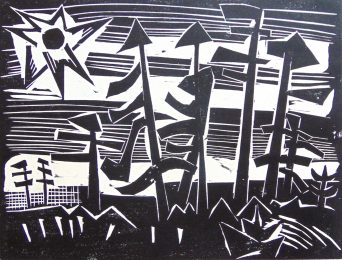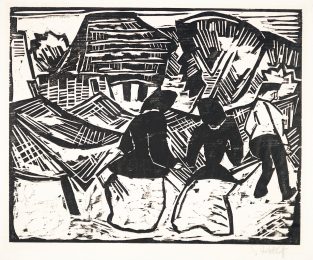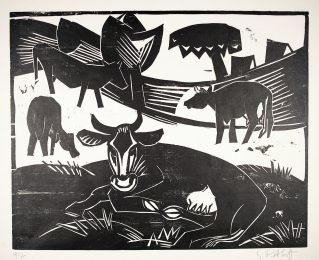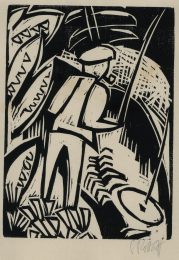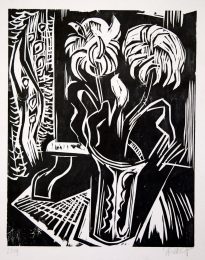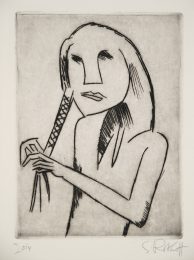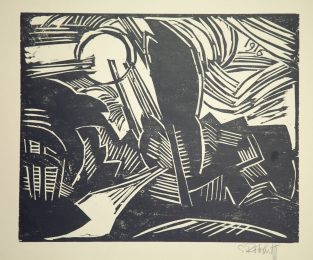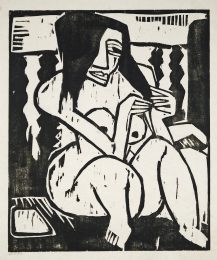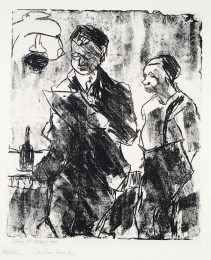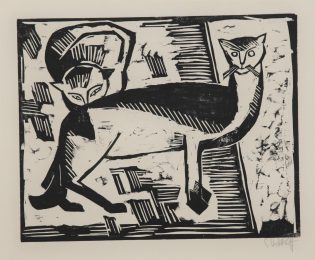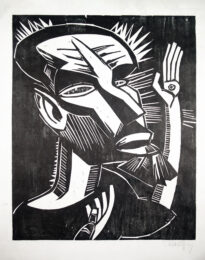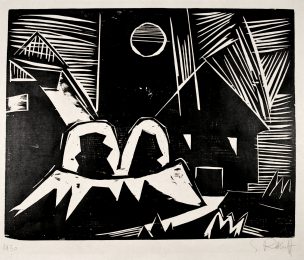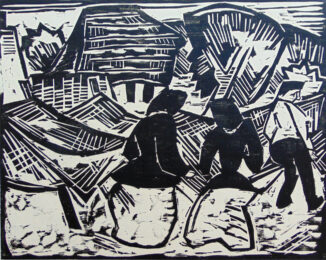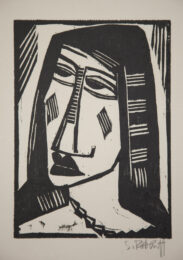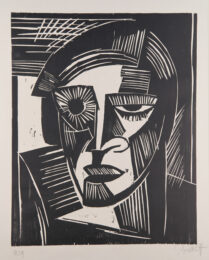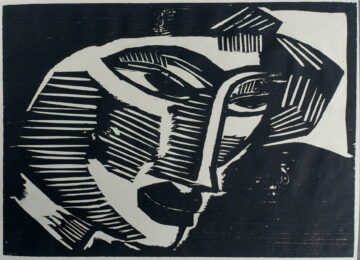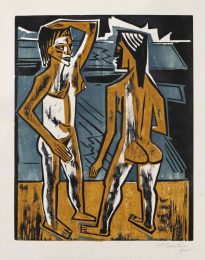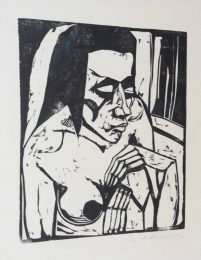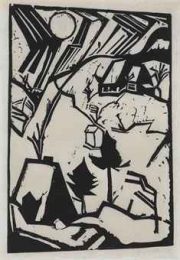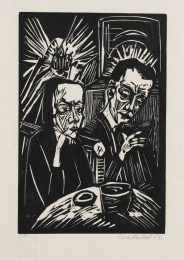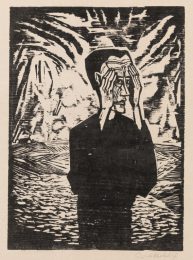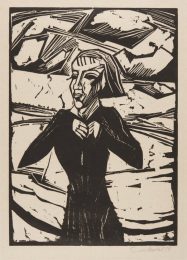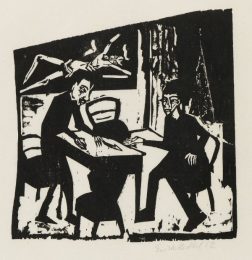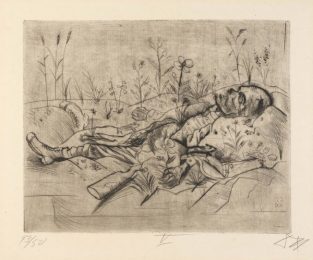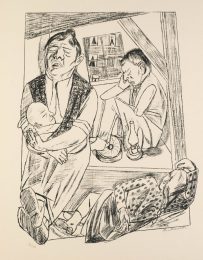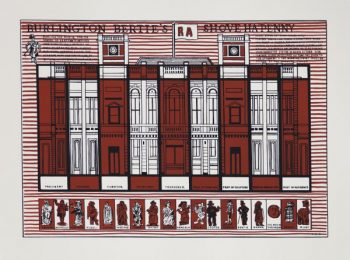Details — Click to read
This work is from the series 9 Holzschnitte (9 Woodcuts) depicting scenes from the life of Christ. These monumental works are reflection of the Expressionist artist’s reaction to the horrors of the First World War, and their looking toward Christianity for some form of understanding. Pechstein produced his celebrated series the Vaterunser (The Lord’s Prayer) at the same period.
Of all the Expressionist artists, Schmidt Rottluff’s are often the most large-scale and direct, relying on strongly contrasting passages of black and white with rarely any gradations of tone. This powerful series was published by Kurt Wolff in Munich already in December 1918 very soon after the end of the First World War.
The nine woodcuts in the series were:
Kuss in Liebe
Kristus
Gang nach Emmaus
Kristus flucht dem Feigenbaum
Petri Fischzug
Kristus und die Ehebrecherin
Maria
Kristus un Judas
Jünger
Kurt Wolff (1887 – 1963) established what was probably the most significant publishing house for Expressionist literature in Germany. He was the first to promote and publish Franz Kafka. After the First World War and with the help of two new recruits to the firm, Hans Mardersteig and Carl Georg Heise, he published artists’ prints in addition to the books including the noteworthy pamphlet Genius which was issued in three volumes between 1919 and 1921. Genius featured original prints, most by Expressionists, including Erich Heckel, Karl Hofer, Franz Marc, and Karl Schmidt-Rottluff, among others. He also published several landmark illustrated books by other artists including Oskar Kokoschka (Die träumenden Knaben [The Dreaming Boys], 1917, and Karl Kraus’s Die chinesische Mauer [The Chinese wall], 1914), Ernst Ludwig Kirchner (Georg Heym’s Umbra vitae [Shadow of life], 1924), and Paul Klee (Voltaire’s Kandide, 1920); as well as important print portfolios by Ludwig Meidner (Strassen und Cafés [Streets and Cafés], 1916), Hugo Steiner-Prag (Der Golem, 1916). After the struggles of the inflation years Wolff was left exhausted by the business and closed the operation in 1930. He went first to Italy then England and France, and finally he escaped to New York after some terrible times in internment camps, returning to live in Europe in 1960.
Selected further Literature:
Karl Schmidt-Rottluffs Graphische Werk Bis 1923, R. Schapire, Berlin, 1924
Moeller, M. Remm, C., Büntig, C, Starke Schnitte: Karl Schmidt-Rottluff – Holzschnitte Aus Der Sammlung Des Brücke Museums Berlin, 2014
Wolff, K ; Edited by Ermath, M, Kurt Wolff: A Portrait in Essays and Letters, Chicago, 1991

